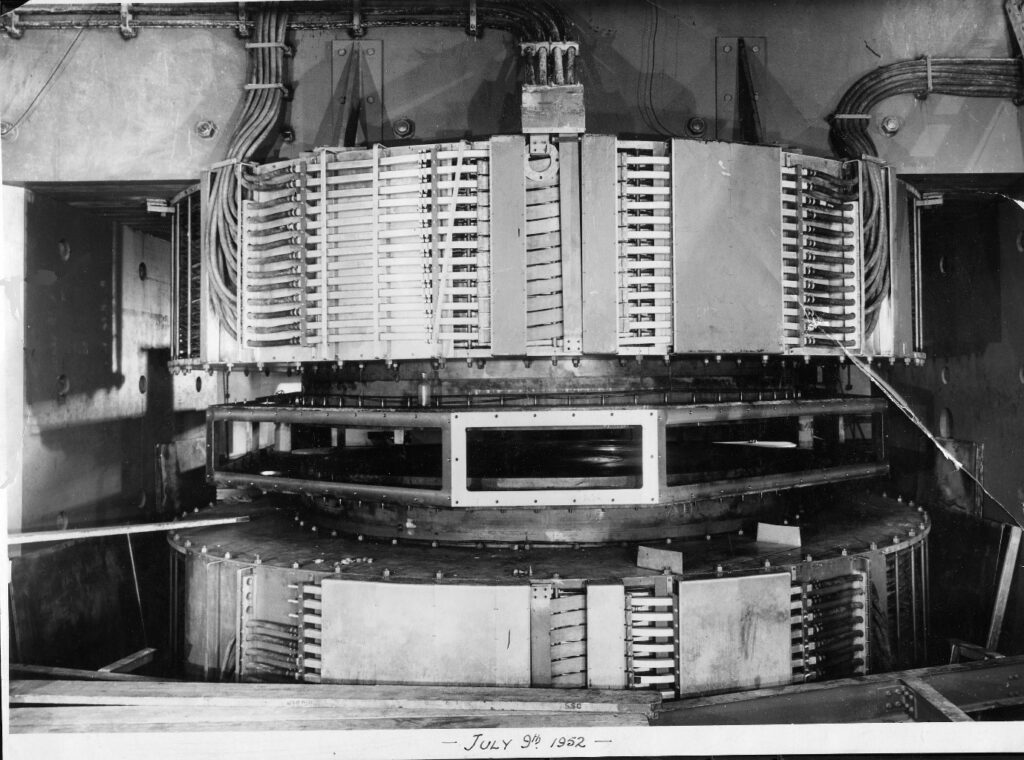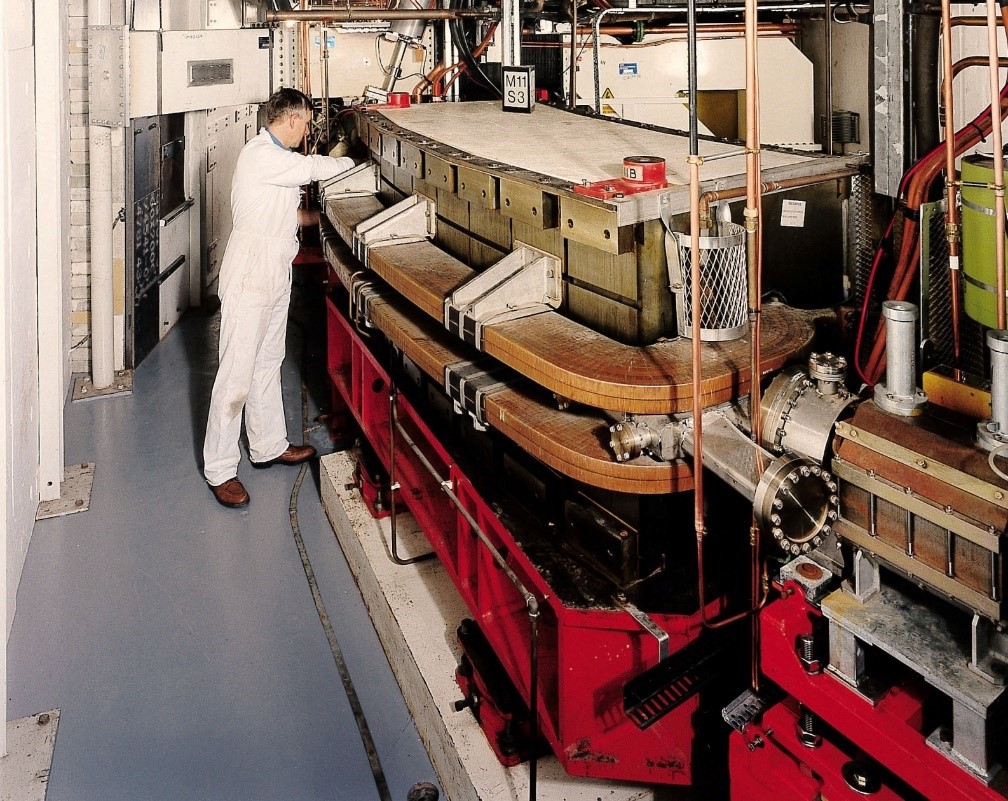An event about the History of UK particle accelerators has taken place at the Cockcroft Institute (Daresbury Laboratory) and the Rutherford Appleton Laboratory as well as online. The event took place on Tuesday 7th March. The program for the event can be found on Indico.
The event started with an Introduction by Dr Kay Dewhurst (University of Manchester and CERN) who had led the organisation of the event. This was followed by a talk on the Cockcroft Walton machine, the ‘first particle accelerator’, by Dr Suzie Sheehy (University of Melbourne/University of Oxford). The motivation for creating this accelerator was to discover what the nucleus of the atom was made from (neutrons had not been discovered at this time) with a beam of particles which could be controlled (radioactive sources had been used for these studies prior to this). It was 1932 before this accelerator was complete but it was the first to split the nucleus with a beam of protons impacting a lithium target to create alpha particles.
The next talk was given by Dr Peter Rowlands (University of Liverpool) about the Liverpool Synchrocyclotron. The limitation of machines such as the Cockcroft Walton accelerator was that the acceleration was done just once by an electrostatic field. The invention of the cyclotron allowed for repeated accelerations but in a spiral path. It was the invention of the synchrocyclotron using a synchronised RF field to accelerate the beam rather than electrodes, which allowed beams to be stored and the energy increased much further. This turned the particle accelerator from a nuclear physics to a particle physics machine. A synchrocyclotron was built underneath what is now the Metropolitan Cathedral in Liverpool and the first beam was extracted in 1954. Many particle physics theories were investigated with this machine including the Panofsky ratio, non-conservation of charge and parity and the nature of the weak force. The synchrocyclotron continued to operate until 1968.

The next talk about the ISIS Linac and accelerators at RAL was given by Alan Letchford. A number of different types of Linac were described in this talk. The history of the Harwell site (which includes what is now RAL) was explained and the decision to build a proton linac for civilian nuclear research. This linac was used for nuclear physics experiments until 1969. A 7GeV synchrotron called NIMROD was also constructed and operated from 1964. The injector for NIMROD was based heavily on the proton linac design. NIMROD was closed in 1978. Following this, approval was given to build the ISIS spallation neutron source, whose design re-used a lot of the NIMROD infrastructure. ISIS has had a number of upgrades in its lifetime and still operates today
The final talk was given by Prof Jim Clarke about the SRS at Daresbury Laboratory. Daresbury Laboratory was established to host the NINA electron synchrotron. This operated from 1966 to 1977. In the 1970s the synchrotron radiation which was created at each of the dipole magnets started to be used for experiments. After the decision to close NINA it was decided that a dedicated synchrotron radiation source should be built at Daresbury using the same building which had been used to house NINA. The SRS started operation in 1980 and was the world’s first second-generation light source. As well as using the dipoles as sources of synchrotron radiation, dedicated magnets including undulators and wigglers were inserted into some of the straight sections. The SRS was upgraded in 1986 to a higher brightness/lower emittance lattice. The science that has been done using the SRS is varied and has contributed to shares of two Nobel prizes for Chemistry in 1997 and 2009. The SRS eventually closed in 2008 after the successful commissioning of a new third generation light source, Diamond, which was built on the RAL site.

Organiser Dr Kay Dewhurst said, “I organised the History of UK Particle Accelerators event because it was the kind of event I wanted to attend. I am currently a researcher at CERN, and take the public on tours of CERN’s oldest accelerator, the synchrocyclotron, which is still on site in Geneva. Preparing for those tours made me think about the history of other accelerator labs, particularly Daresbury Laboratory, where I worked on my PhD. During my PhD years, I heard snippets of information from colleagues about working on past machines like the SRS. I wanted to bring those snippets together to get a fuller picture of the history of accelerators in the UK. It has been great to hear the stories of these impressive machines and the human stories that go alongside them.”
“Science and technology research is always looking forwards, toward the next innovation or achievement. It is also valuable to look back, to remind ourselves how far we have come and what great achievements we have already made possible. One of the best things about the event was the feedback from attendees; for some, it brought back fond memories, but everyone went away having learned something new! The UK has a great history in developing particle accelerators; this event has highlighted some of those achievements and I hope it has gone some way toward inspiring future accelerator scientists to continue this remarkable work.”
The History of UK Particle Accelerators event was supported by the IoP Particle Accelerator and Beams group and the IoP History of Physics group.
More information on each of the talks given at this event can be found here: https://indico.cern.ch/event/1239975/
